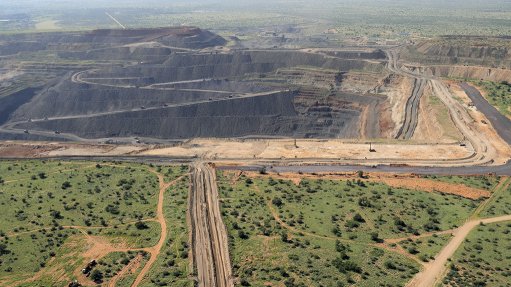WWF publishes guide on managing invasive alien plants
The WWF has published a new guide on how to manage invasive alien plants, providing landowners, land managers and clearing contractors with context, examples and practical guidelines.
The guide, ‘A practical guide to managing invasive alien plants: A concise handbook for land users in the Cape floral region’, is aimed at helping landowners to take the necessary steps to control and eradicate invasive alien plants, which is required by law.
“With the invasion of water-intensive exotic plants being one of the top threats to the health of our critical water source areas and thus our water security, it is imperative that we all play a part in managing this threat,” says WWF South Africa freshwater and policy lead Ruth Beukman.
“To this end, it is important that we work in partnership to enable and empower land users, landowners, local communities, and private companies to take ownership of, and action in, addressing this risk to the health of their land, the ecosystems, water supply, their property and livelihoods.”
Most species of invasive alien plants found in South Africa are from Australia or South America and grow undeterred and multiply rapidly as they are without their naturally occurring pests, insects, fungi or diseases.
According to the guide, there are currently 2 033 listed alien species in South Africa, comprising marine organisms, freshwater fish, insects and plants, 771 of which are invasive, while 107 are found to have a major impact on the environment. Of the 107 problem species, 80 are plants.
Large parts of the Cape floral region, which is a renowned biodiversity hotspot and the world’s smallest plant kingdom with the highest species variety, are heavily infested with fast-spreading and thirsty exotic plants and trees.
By disrupting natural ecosystems, taking up space and using natural freshwater resources, particularly in a water-scarce country like South Africa, invasive alien plants can cause significant damage to the natural environment.
“The Madeira vine from South America, for example, smothers indigenous trees like the protected Milkwood tree, while the Port Jackson, pine, wattle and gum trees use far more water than indigenous vegetation,” says Beukman.
The alien species also crowd out local species and compete for water and nutrients and, in some cases, as seen in Cape Town recently, some cause wildfires to burn more intensely and spread more easily, putting people and property at risk.
The mountainous regions of the Cape floral kingdom are also important water- supplying areas, generating freshwater for millions of urban dwellers, food-producing farms and other industries and communities, adds Beukman.
While the guide, which contains a detailed set of instructions on how to proceed when clearing invasive alien plants, focuses on the broader Cape floral region, it aims to be a first-stop resource that can be adapted to local conditions anywhere in South Africa and provides pointers for where to find further information from numerous other sources.
Land users are given an overview of how to approach an invasive alien plant management programme, including an understanding of what invasive alien plants are, the relevant legislation, planning, the methods that are available, health and safety considerations, the safe use of herbicides and successfully rehabilitating the cleared land.
The development of the nine-chapter manual, with colour-coded sections, was a collaborative effort. The manual was developed by WWF South Africa in collaboration with the Agricultural Research Council; the City of Cape Town; Corteva Agriscience; the Department of Environment, Forestry and Fisheries; Landworks; the Fynbos Trust; and NCC Environmental Services.
“The numerous authors are experts in the field and have many years of combined experience in dealing with alien plants in their respective professions,” says Beukman.
The information is based on the latest policies and legal requirements and consists of guiding principles of best practice methods to empower land users to develop a management plan to control these landscape-damaging alien plants.
Comments
Press Office
Announcements
What's On
Subscribe to improve your user experience...
Option 1 (equivalent of R125 a month):
Receive a weekly copy of Creamer Media's Engineering News & Mining Weekly magazine
(print copy for those in South Africa and e-magazine for those outside of South Africa)
Receive daily email newsletters
Access to full search results
Access archive of magazine back copies
Access to Projects in Progress
Access to ONE Research Report of your choice in PDF format
Option 2 (equivalent of R375 a month):
All benefits from Option 1
PLUS
Access to Creamer Media's Research Channel Africa for ALL Research Reports, in PDF format, on various industrial and mining sectors
including Electricity; Water; Energy Transition; Hydrogen; Roads, Rail and Ports; Coal; Gold; Platinum; Battery Metals; etc.
Already a subscriber?
Forgotten your password?
Receive weekly copy of Creamer Media's Engineering News & Mining Weekly magazine (print copy for those in South Africa and e-magazine for those outside of South Africa)
➕
Recieve daily email newsletters
➕
Access to full search results
➕
Access archive of magazine back copies
➕
Access to Projects in Progress
➕
Access to ONE Research Report of your choice in PDF format
RESEARCH CHANNEL AFRICA
R4500 (equivalent of R375 a month)
SUBSCRIBEAll benefits from Option 1
➕
Access to Creamer Media's Research Channel Africa for ALL Research Reports on various industrial and mining sectors, in PDF format, including on:
Electricity
➕
Water
➕
Energy Transition
➕
Hydrogen
➕
Roads, Rail and Ports
➕
Coal
➕
Gold
➕
Platinum
➕
Battery Metals
➕
etc.
Receive all benefits from Option 1 or Option 2 delivered to numerous people at your company
➕
Multiple User names and Passwords for simultaneous log-ins
➕
Intranet integration access to all in your organisation

















